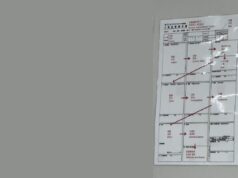
My guest for Episode #324 of the podcast is Art Smalley. Art was one of the first Americans to work for Toyota Motor Corporation in Japan and, since then, has been helping other organizations with the Toyota Production System (a.k.a. “Lean”) methods and approaches. You can also visit his website to learn more, www.ArtOfLean.com.
Art is a fellow faculty member at the Lean Enterprise Institute. He has written two Shingo Publication Award-winning books: Creating Level Pull and (co-authored with Durward Sobek) Understanding A3 Thinking. Art later wrote Toyota's Kaizen Methods: Six Steps to Improvement with Isao Kato.
I own all of these books and have only met Art briefly in the past, so I'm happy to finally have him here as a guest. Today, we'll talk about Art's career and his most recent book, Four Types of Problems, published by the Lean Enterprise Institute (note: LEI provided me a free electronic copy of the book).
I hope you enjoy the conversation as much as I did.
Streaming Player:


For a link to this episode, refer people to www.leanblog.org/324.
For earlier episodes of my podcast, visit the main Podcast page, which includes information on how to subscribe via RSS, through Android apps, or via Apple Podcasts. You can also subscribe and listen via Stitcher or Spotify.
Topics and notes for this episode:
- Please introduce yourself for the listeners… how did you end up working at Toyota?
- “An accidental Lean guy”
- What were some of the lessons you learned in bringing TPS/Lean into an American company (Donnelly)?
- What are some of the things that are most commonly misunderstood about TPS or Lean?
- One example: demanding that everything be an A3
- What led to your Four Types of Problems book?
- What are the 4 types in a nutshell?
- 1: Troubleshooting
- 2: Gap from Standard
- 3: Target Condition
- 4: Open Ended
- Why do you think it's important to get better at Type 1 and Type 2 problem solving before starting to learn Type 3 and A3s?
- How do you distinguish between the Toyota problem-solving method of Type 2 problems and A3s for Type 3?
- What are the 4 types in a nutshell?
- How does your personal practice of martial arts influence your thinking or philosophy about improvement?
- “If you're being choked out by a black belt…” — that has nothing to do with Six Sigma!
- Articles from the LEI website:
Videos of Art:
Thanks for listening!
Please scroll down (or click) to post a comment. Connect with me on LinkedIn.
Let’s work together to build a culture of continuous improvement and psychological safety. If you're a leader looking to create lasting change—not just projects—I help organizations:
- Engage people at all levels in sustainable improvement
- Shift from fear of mistakes to learning from them
- Apply Lean thinking in practical, people-centered ways
Interested in coaching or a keynote talk? Let’s start a conversation.










We must always remember that problems come in pairs. The first problem is the one that has occurred. The second is our own fault and occurs when we do not study the first problem; establish the reason for its occurrence, and take action to learn the lessons and create new procedures to ensure this problem cannot recur.
Your problems can be your best instructors. We should not see problems as obstructions to our progress, but as a source of valuable instruction on how to proceed more effectively.
“I finally ran out of things that didn’t work.” Thomas Edison. His explanation to Napoleon Hill of how he discovered the electric light bulb.